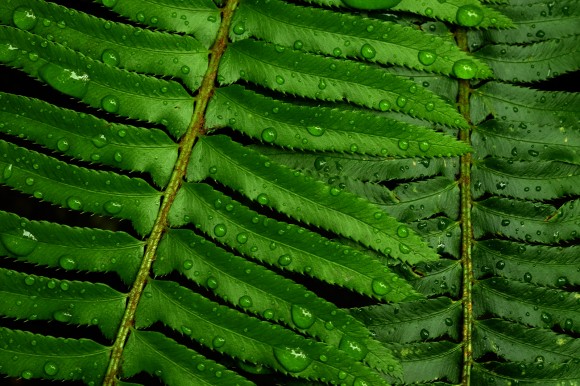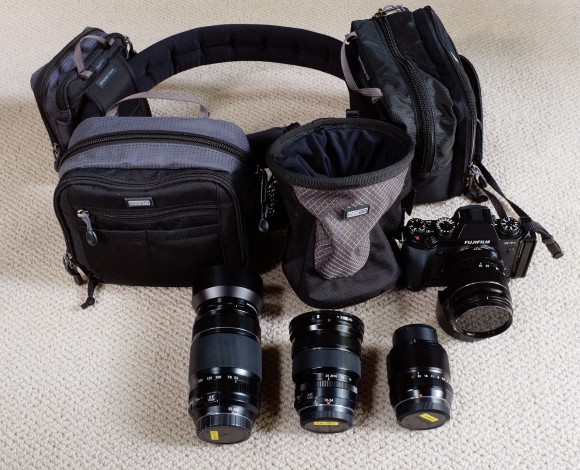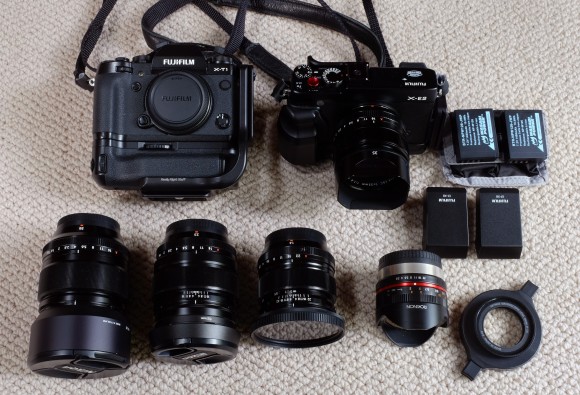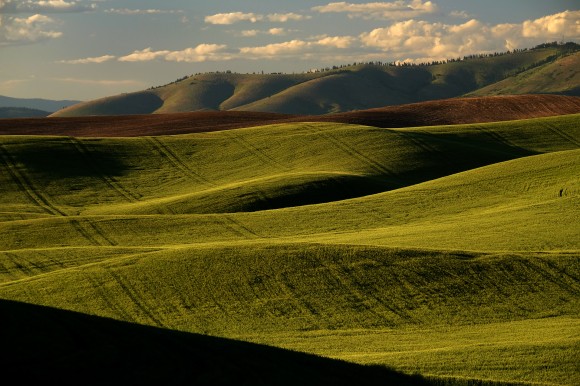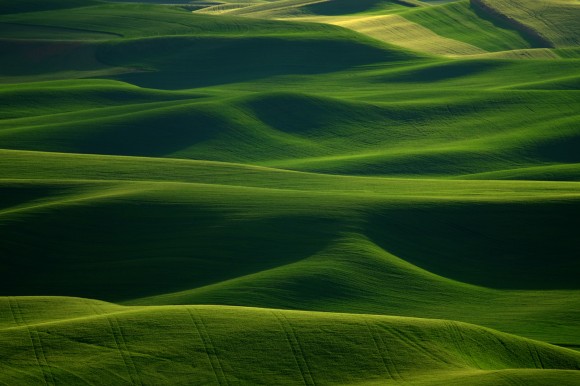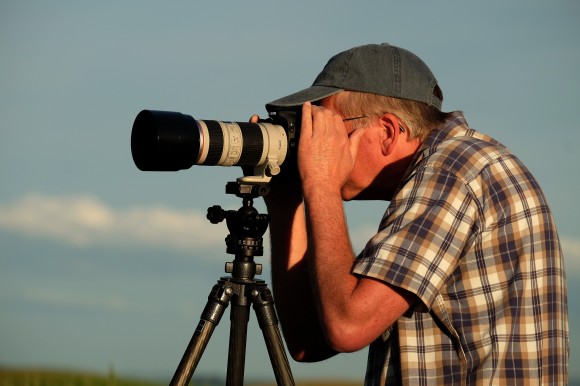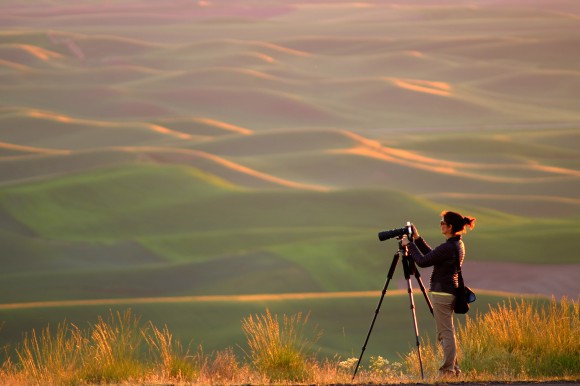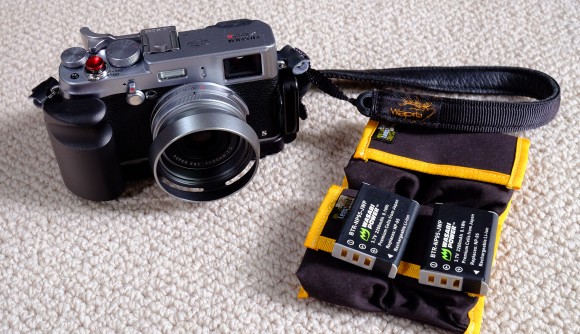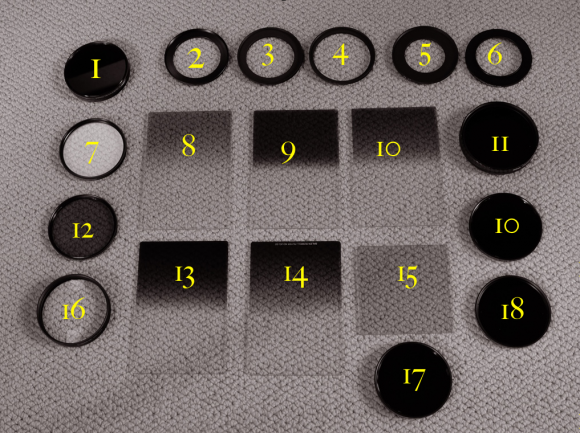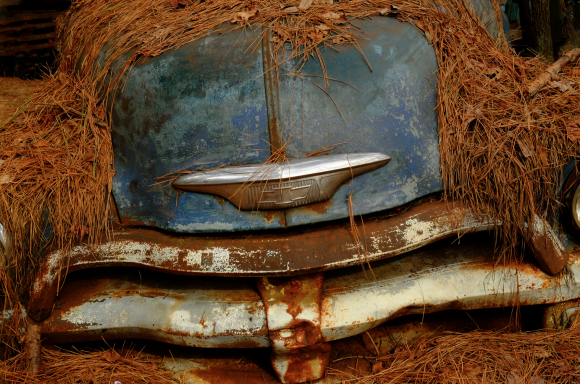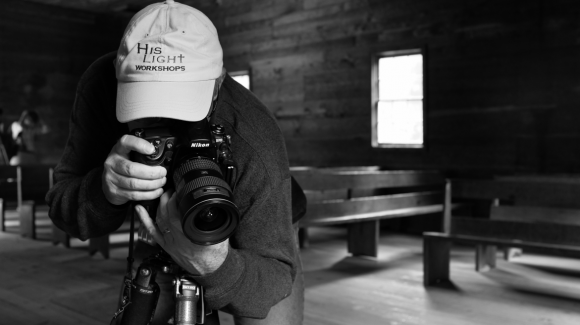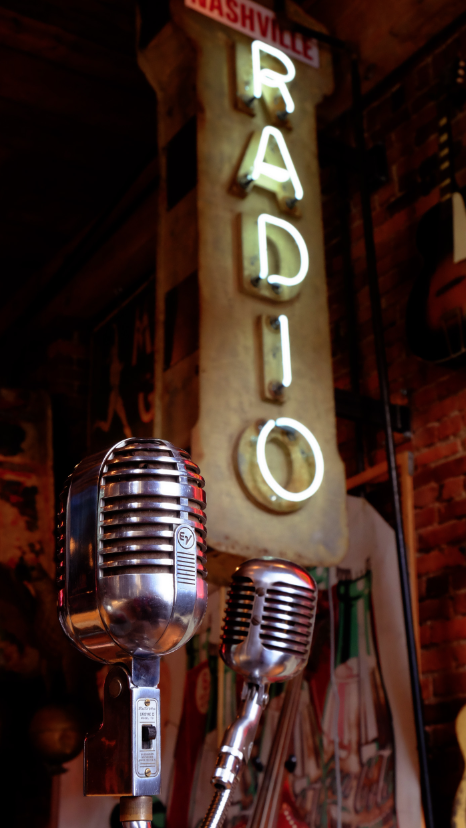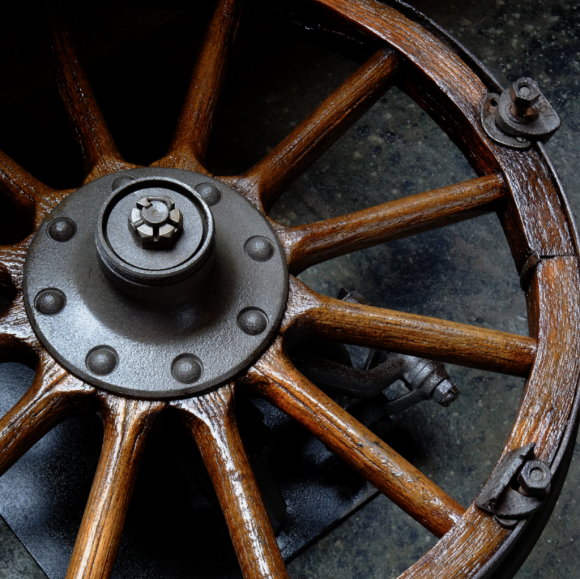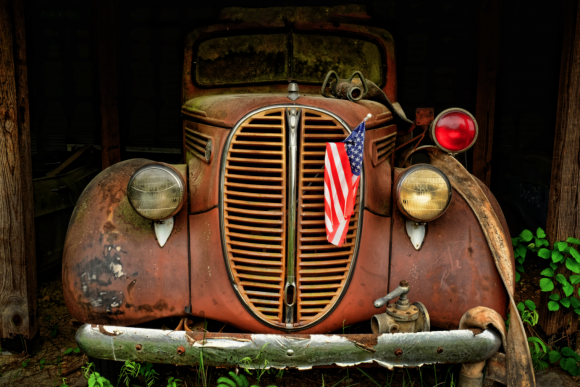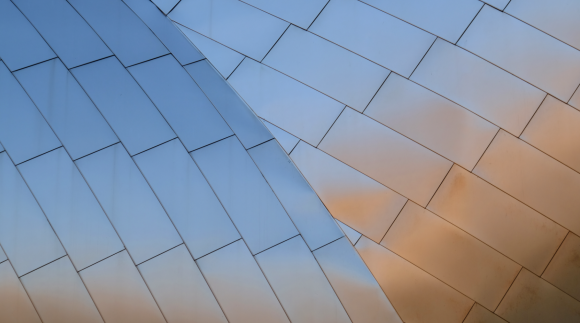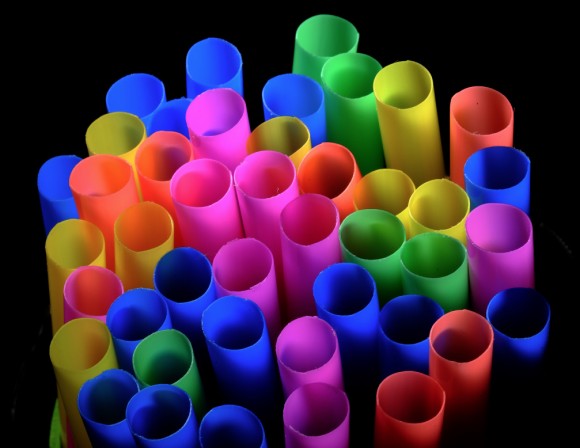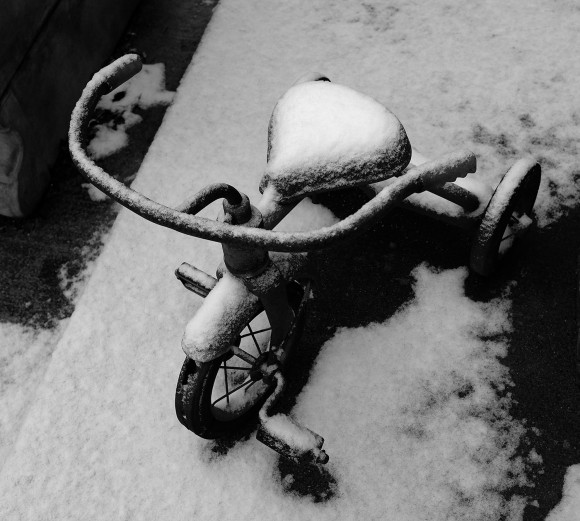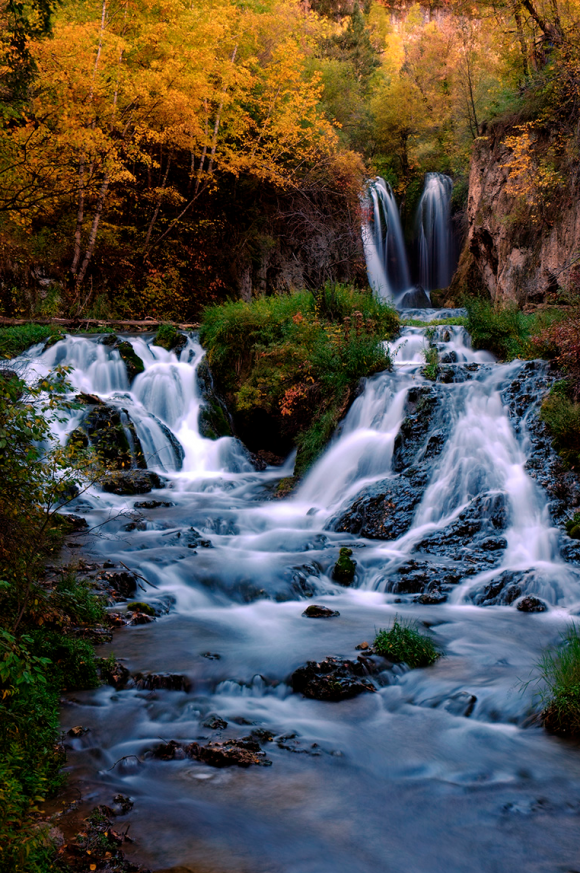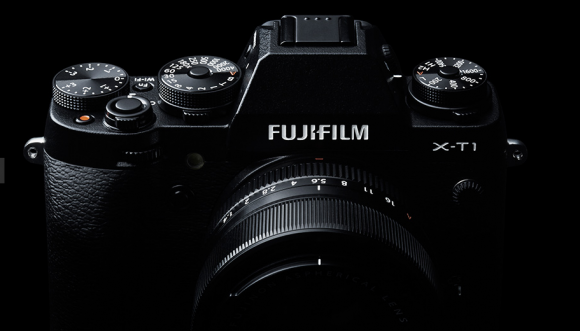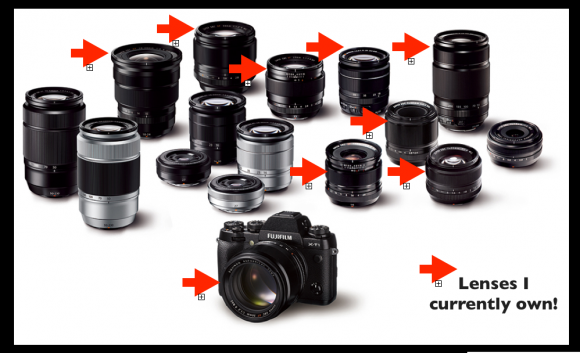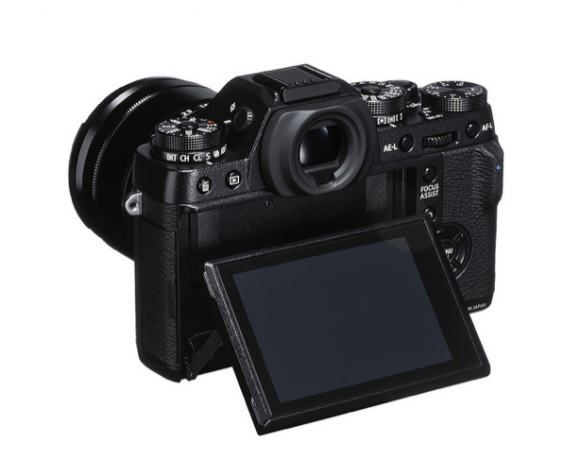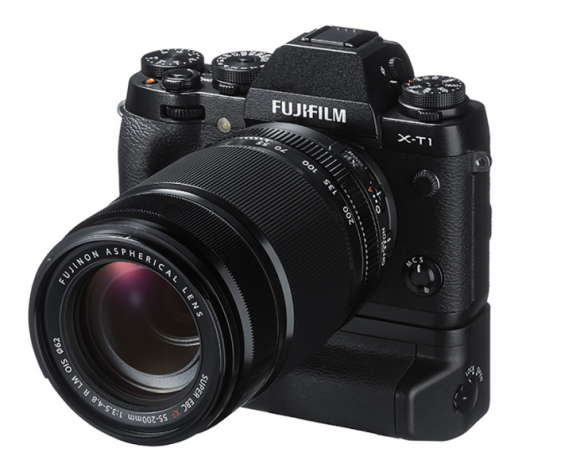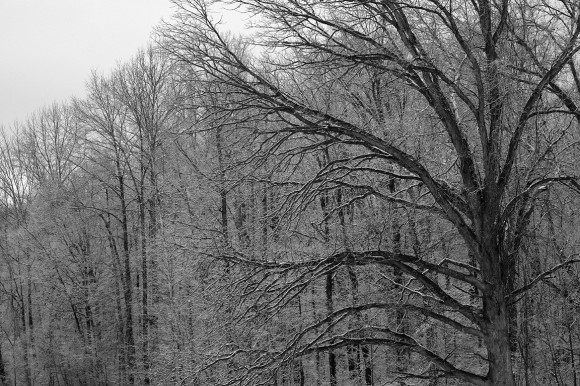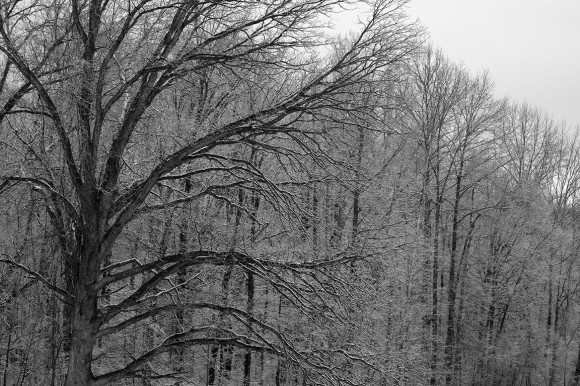Category : The Learning Center
Three things converged. July 1st will be my one year anniversary of retiring from Nikon. I just completed a two week trip to the Pacific Northwest, and got some of my best images of my career, and My Fuji X-System is nearing completion with the advent of “focus peaking”!
Let’s take them one at a time. I’ve not shot more than one half of one percent of my images with anything but the Fuji system in the last calendar year! That says to me that I’m settled where I’m going to be, equipment wise! In one year of shooting all the kinds of things I shoot; nature, close-up, travel, Americana, landscape, people, and some limited action, I’ve found the Fuji X-System, and in particular the X-T1 to be perfect for my kind, and style, of shooting. I’m all in, 100%. My shoulders don’t hurt, my back doesn’t hurt, I’m having more fun, and loving the resulting images, so that’s it, I’m a Fuji guy, period.
I have identified what is my “current” everyday in-the-field system below; The Think Tank belt system, that holds the 10-24, 18-55, 60mm Micro and the 55-200, all Fuji XF lenses. 90% of my every day work can be accomplished with this small. portable system. All the lenses are spectacularly sharp, and because of the incredible High ISO / low noise performance of the Fuji X-cameras, fast enough for general use. In addition I keep the 18-55 on my X-T1 with the Really Right Stuff “L” bracket. * You may notice that I have some different lens hoods on two lenses. I found a 39mm deep telephoto hood that fits perfectly on the 60mm Micro and saves room while allowing a polarizer to be adjusted with the hood screwed into the filter. I also use a metal, screw in Nikon HN-23 lens hood from the Nikon 85mm f 1.8 AF lens on the 55-200, once again allowing a polarizer in place. to turn. I have Singh Ray LB Warming Polarizers on, or for, all lenses!!! The 60mm Micro takes a 39mm which Singh Ray does not make, on that lens I use a B&W Nano coat polarizer.
In a second bag, the Think Tank Airport Essentials backpack; I carry the following back up bodies and my speed lenses. An additional X-T1 with the battery pack and Really Right Stuff “L” bracket, a Fuji X-E2, with Really Right Stuff “L” bracket and grip. 56mm f 1.2, 23mm f 1.4, 35mm f 1.4, and 14mm f 2.8 lenses. I love the 14mm and think it may be a hair sharper than the 10-24, but love the range of the zoom too, I am keeping both, but when a 14mm fits, I love that lens!!! Since Fuji has yet to make a Fisheye, which I rarely use anyway, I picked up a Rokinon 8mm f 2.8, which is surprisingly sharp for a $300. lens! I carry various close-up filter including the Nikon 3T, 4T, 5T, and 6T and the Raynox DCR-150 close-up diopter. Lots of spare batteries, and chargers, and lens and sensor cleaning supplies. All camera bodies have Wapiti Spike Straps, Hand made Elk leather) (http://www.wapitistraps.com/)
Until this trip out west I still had a major concern about the Fuji X-System; no long glass beyond the 300mm end of the 55-200 zoom. (The APS-C size sensor in the Fuji X-cameras has a 1.5 factor making all lenses the same angle of views of a lens 1.5 times longer, thus the 200mm is acting and imaging like a 300mm!) The X-T1 and firmware upgrades for previous models make Focus Peaking a reality and changed everything! I own, some illustrated below, a collection of Nikon lenses from the 1970s and 1980’s that are extremely sharp, but manual focus. Focus Peaking allows very precise manual focusing of these lenses and my in-the-field results have been spectacular, check the images below! I now have a Guru Gear Kiboko 22L+ bag loaded with my manual stuff! They are top to bottom:
a Nikkor 400mm f 3.5 (600mm f 3.5 Equiv. and with the Nikon TC-14B teleconverter it is equivalent to a 840mm f 4.5 lens)
A Nikkor 300mm f 4.5 IF-ED ( 450mm f 4.5 equivalent, and with the TC-14B 630mm f 6)
A Nikkor 200mm Micro Nikkor f 4 (Equivalent 300mm Micro f 4 or with the TC-14B 450mm f 5.6 Micro!!!! that goes 1:1)
A Nikkor 200mm f 4 lens (highly corrected telephoto of Legendary Status, as are all these other manual focus lenses, a 300 mm f 4 equivalent, and with the TC-14B a 420 f 5.6)
The drop in polarizer from Kirk Enterprises, (long discontinued!), was a gift from Jack Graham, what a guy!!! Means even more, coming from him!
O.K. this would all be great if this wonderful, and fast long glass works!? Is it sharp on the Fuji X-System cameras? I’ll let you be the judge, keep in mind these are all images with the 300mm f 4.5, the 400mm f 3.5 and 200mm Micro are even sharper. If you do not need auto focus, and I don’t, I think these images will sell my point! Feel free, in fact PLEASE, single click any image to see it larger! A big plus, all these older manual focus glass is much less expensive than the newer auto focus ones, A current 600 f4 is around $12,000. for around $2,000. you can get a 400mm f 3.5 which on the Fuji is a600mm f 3.5 and much, much, smaller and lighter!
Finally to complete the system I carry a Fuji X100s which Zak Arias called the greatest camera ever made, I think he may be very close to being right!
Filters? You bet! I use a Mind Shift Filter Hive illustrated below for all the various extra-duty filters.
1. Singh Ray I-Ray (Infra Red) 77mm & Singh Ray LB Polarizer thin 77mm
2 thru 6. Step up rings for each Fuji filter (52mm, 58mm, 62mm, 67mm. 72mm) size to 77mm
7. Singh Ray Tony Sweet Soft Ray filter 77mm & Singh Ray color intensifier 77mm
8. Singh Ray 1 stop soft graduated ND
9. Singh Ray 3 stop hard graduated ND
10. Singh Ray Singh Ray 2 stop hard graduated ND
11. Singh Ray 15 stop Mo-Slow ND
12. Singh Ray 72mm thin LB Polarizer
13. Singh Ray 3 stop soft graduated ND
14. Singh Ray 2 stop soft graduated ND
15. Amber color correction
16. Canon 500D diopter 77mm
17. Nikon 77mm large polarizer
18. Singh Ray Mo-Slow 5 stop ND – (10) 10 stop, and 15 stop
Summing it up!
I now have a system that covers from 12mm to 840mm and a field system that covers the vast majority of my needs. One last thing, I decided on this trip that even though the cameras are lighter, with this much focal length range I “invested” in a Really Right Stuff TVC 33 Series 3 tripod and a new BH-55 LR head, mine will go in for refurbishmenet and will become my back up. Jack Graham and Jim Haverstock both use this tripod and I’ve admired their’s way too long, so one of my new tag phrases! The clock is ticking, enjoy it now!!!
Of course new things will be released and I will consider them, but even if Fuji stopped today, I have all the photographic horsepower I need to shoot what I want to shoot,and after all, isn’t that the name of the game! Of course when new stuff comes, I will review it here!
Blessings,
the pilgrim
Johnny here is the image of the 300, courtesy of Ken Rockwell:
This post has 29 comments. Click here to read them
This entry was posted on Wednesday, June 25th, 2014 at 4:05 pm
You can follow any responses to this entry through the RSS 2.0 feed.
Since I get constant questions about my decision to use the Fuji X-System as my everyday, go to camera kit, I thought it was time to give Fuji a Report Card!
Before you can give a grade you must set a standard, so here is my NEEDS emphasis, “my” NEEDS:
1. My carry, everyday, virtually everything system must be: Smaller & and Lighter than the Nikon FX/DX system I was using.
2. State of the Art Performance. I did not want to sacrifice what I could get from my Nikon system to save weight. (Though I had no choice, the weight savings was mandatory.) Color, Sharpness, Noise, Build Quality.
3. Build Quality has always been imperative to me, the bodies and lenses of the new system had to measure up to my 44 year experience with my Nikon gear.
4. Frankly, Affordability was a factor.
So let’s break it down and give a score. I will use the 5 Star System.
Weight Savings: 5 Stars The full Fuji System is less than half the weight of a the same system in Nikon. Bodies and lenses are also less than half the size, making packing in camera bags easier.
PERFORMANCE
COLOR QUALITY: 5 Stars *
* Fuji color closely matches the personality of their films, if you loved Fuji films; Velvia, Provia, Astia, you will love the Fuji digital rendition of color, if not, not so much. I love Fuji color, so it works for me.
SHARPNESS: 5+ Stars *
Sharpness is a factor of the sensor, the file processing in-camera software, and the lenses. The Fuji X-Trans Sensor combined with no Optical Low Pass Filter and their proprietary file processing, yields the sharpest images I have ever recorded in a 45 year career, PERIOD. I own the Fuji 14mm, 10-24, 23mm, 35mm, 60mm Micro, 56mm, 18-55, and the 55-200 lenses, (keep in mind that since the Fuji X-System is an APS-C size sensor camera these focal length are effectively 1.5 times longer). While I had many 5 Star Nikkor lenses, all of my Fuji lens have been “at least” 5 Stars! Enough said! O.K. not quite enough, the D800 was and is the most serious high resolution camera I have ever used, nothing is quite like those files, but it and it’s lenses are too heavy for me! Truthfully the Fuji system has all the resolution I need.
NOISE: 5+ Stars *
In spite of the ridiculous results of the Popular Photo test, last month, the Fuji X-System cameras, (I own four; X-T1, X-E2, X100s, and the original X-Pro 1), are among the very lowest noise producing cameras at High ISO I have ever used. I regularly shoot at ISO 3200 with no fear of noise, when I absolutely must I shoot 6400 I only have to do minor noise reduction processing. The Fuji cameras are very, very low noise. Combined with superlative fast single focal length lenses, the Fuji system is the best low light system I have ever used.
LASTING BUILD QUALITY: 5 Stars * We are only one year in, time will tell.
O.K., this one is purely subjective since I have no way of testing metal, and I’m not an expert on camera design. I can say that the design that Fuji chose for the X-System fits my comfort level perfectly. The retro design, going away from buttons and wheels, to aperture rings on the lenses, and knobs that adjust shutter speed, ISO, and exposure compensation, are very comfortable for this baby boomer. I have dropped several bodies and lenses with no harm whatsoever, but can’t say a anything more than they sure seem tough enough to me.
RESULTS: 5 Stars +
This also falls in the area of subjective response, but here goes; In the 45th year of a photography career I have never been happier with the equipment I’m using, the joy of shooting with it, the fun instilled by the gear, and the resulting images! I can’t make it any clearer than that……(samples to follow!)
AFFORDABILITY: 5 Stars +++ *
When I started my search for the new; smaller, lighter system I took all the things above into consideration, it was a long search. I looked at Panasonic & Olympus, and liked them both, but the 4/3rds size sensor fell down at very high ISO and the noise was just not what I wanted. I considered, (for just a moment) Leica, but there was not much of weight savings in the bodies and the cost was astronomical. A one body system, (M240) and lenses from 16mm to 135mm had a price tag of $36,500.!!!!!!! My entire Fuji System that includes four cameras, and 8 lenses that range from 15mm to 300mm and my total cost has been around $11,000. The Leica is a wonderful instrument and has a full frame sensor, but the long end of their lenses stops at 135mm which is well short of my needs. Since I do not own or have not shot Leica in a long time, since the film days, I can’t say if the technical quality is truly superior, I can say that the cost of the system makes it out of my range, which is also why I do not own a Ferrari!
IN CONCLUSION:
I started over a year ago looking for the cameras and lenses that would carry me for the rest of this journey of being a photographer. I am satisfied that I have found that system.
Is it perfect? No.
What I would like to see?:
Firmware changes that make +or- exposure bracketing of at least 7 stops, 9 would be fantastic.
I would like a way to set the self timer and it not go off until you change it. * I use the 2 second timer as a cable release many times.
We are getting a 24-85 f 2.8 equiv., 75-210 f 2.8 equiv lenses later this year, if they are not too large, I will own both.
A promised long zoom is coming and the “rumor” is sit will bye a 120-400, that would be an equiv. 180-600!!! “If” it is a constant f4 with OIS, I’m going to have to own it!!!! If I can afford it! That is what I call a trunk lens. It lives in the trunk until you need it!
Things I like very much about Fuji, the company:
They listen to the users, and bring our products that the users are asking for.
When they have a problem, (and all companies have problems!), they admit it and fix it immediately!
Fuji understand that the followers of the X System demand quality bodies, and superior lenses, and that is all they have produced so far, and I believe that they will hold that standard, I think it is in their DNA.
FINAL THOUGHT:
Fuji seems to be feeling pressure to bring out a full frame sensor system. That would require another entire line of lenses and increase weight and size. Selfishly I hope they don’t, I think they make a near perfect system now, and I want their attention fully on the current system, but what will be will be!!! I’m a happy camper because they have given us what we have now!
Some of my favorite images from the Fuji System:
Fuji X-E1 and 60mm Micro
Fuji X-E1 with 18-55 lens – 1:1 format, center 12mega pixels of sensor
Fuji X100s camera set for monochrome.
Fuji X-E2 with 18-55 lens ISO 3200
Fuji X-E2 with the 18-55 1:1 format
Fuji X-T1 with the 55-200 and the Nikon 5T Diopter ISO 6400!!!!!! No noise reduction has been applied to this file!!!!
Fuji X-T1 with the 18-55 – ISO 400
Fuji X-T1 with the 18-55 – ISO 400
Fuji X-T1 with 10-24 – ISO 400
Fuji X-T-1 with the 18-55 processed in Topaz Adjust Spicify
Fuji X-T1 with the 18-55 – ISO 3200
Fuji X-T1 with the 55-200 – ISO 400
Fuji X-T1 with the 60mm Micro
Fuji X100s ISO 1600
Fuji X-E2 with the 18-55
Be blessed, I am,
the pilgrim
This post has 44 comments. Click here to read them
This entry was posted on Saturday, May 10th, 2014 at 5:51 pm
You can follow any responses to this entry through the RSS 2.0 feed.
I’m wearing a new wrist band, pictured above, and it does relate to today’s blog entry, and much more!! The website for this not for profit organization is : http://becauseisaidiwould.com/ I encourage you to go there and look into this great site. Alex Sheen, the founder, tells the heart rending story of his relationship with his father, and his contemplation of what his father had left him after he lost him to cancer. In short the organization encourages people to live with integrity, to not make promises we can’t or won’t keep, to live by the words, “Because I said I would”. I gave my two sons and son-in-law wrist bands and t-shirts and the article I read on a Southwest flight that started my involvement with the organization. I want to make the world a better place and that starts with making myself a better man, and my first step, beyond a comitmenet to my faith, is to become the man I want to be, and live by my words!
Now because I promised to not beat the Fuji thing to death, but keep the techy members of my readership up to speed, here is the latest Fuji introduction, the X-T1
I never thought I would complain that a camera company was coming out with too many great products, to fast!! Well in the short year and half that I have been a Fuji owner and shooter, they introduced the X100 (which I never owned), the X10 which was my first Fuji, and it was so good I could have it as my only camera, except above ISO 400 the noise just wasn’t good enough for available light work! Next I bought the X-E1 and it was incredible, shockingly low noise, and wonderful files, second only to the D800! That was the beginning of my love affair with the Fuji X-system! I upgraded from the X-E1 to the X-E2 a much improved model all this within a year!! I added the incredible X100s my carry around and travel camera whey want to go super light. Finally I broke down and bought the original big boy, (only slightly larger) X-Pro 1, which I love as well. I was sure my next purchase would be in 2015 when the X-Pro 2 is likely to arrive, but Fui threw me a curve, a big juicy one, they introduced this new SLR like X-T1. None of this would matter if the Fujinon lens line was not so superlative. I now own virtually everything they have made (so far) and every single lens has been one of the sharpest of that given focal length I’ve ver used.
So let’s take a look at the new X-T1
What do I like about this latest body?
1. Much faster, bigger buffer, can shoot 8 FPS for up to 47 jpegs before it buffers out!
2. Very much improved EVF with great magnification and the fastest redraw in the industry. Looks like it will make using a EVF finally almost as good as a conventional optical viewfinder with many great advantages. Specs: 2.36 million dot OLED .77 magnification. a lag time of only 0.005 seconds that’s less than 1/10th the current best for Fuji!
3. Fully sealed from water, dust, and works in super low temps. (-10 degrees)
4. Same Sensor and processor as my X100s and X-E2 both of which make superlative images with that sensor set. Super high response times, and very low shutter lag.
5. A fold out LCD panel done right, with hardened glass, this is something I’ve wanted desperately!
6. Predictive AF for moving subjects that really works!
7. Fully encompassing Magnesium alloy body structure, one of the best I’ve ever seen. (image below)
8. A battery grip that improves battery life and give a vertical shutter release and additional control buttons.
9. While I love the form factor of the classic rangefinder cameras, I did miss the SLR type set-up and this X-T1 brings that back, but in a small, well built body.
10. And finally Fuji owners finally feet the remote operation with iPhones and iPads with live view and all the remoter setting sand shooting options, tyke app is available from the App Store.
All in all another dent in my camera purchases savings account!!! If that were not enough the 10-24 f4 OIS lens and the 56mm f 1.2 lens are due out in the next two months!!! The year is starting off pretty fantastic!
Blessings,
the pilgrim
One Last Point!! I know I will get an email later today with this question, ( ” You said you were switching to this system to save weight, but you already have bought 30 lbs. of Fuji cameras and lenses and say you will buy more. Where is the weight savings??” ) So let me answer it now!
I will never be carrying more than about 15 pounds in the field for long walks or hikes. I generally carry one body, ( with a spare in the vehicle), and just the two or three lens for the kind of work I’m doing.
Here are some lens body/lens combinations:
Travel (going ultra light) Fuji X1oos only
Travel ( moderate system) Fuji X-E2 18-55 & 55-200
Outdoor and Nature (walking or hiking) Fuji X-E2, 14mm, 18-55, 55-200 and the 60mm Micro.
Outdoor and Nature (Driving to location) Fuji X-T1, 10-24, 23mm f 1.4, 18-55, 55-200 and the 60mm Micro.
Available Light Work Fuji X-T1 or X-Pro-1, 14mm f 2.8, 23mm f1.4, 35mm f 1.4, & 56mm f 1.2
Americana walk around (like Old Car City) Fuji X-T1, 10-24, 23mm f1.4, 18-55, 55-200 (In a waist belt system)
Close-up Work Fuji X-T1, 60mm Micro, Nikkor 200mm Micro (with a Nikon to Fuji X adapter) Extension tubes and diopters
Hope that explains it a little better.
This post has 24 comments. Click here to read them
This entry was posted on Wednesday, January 29th, 2014 at 5:23 pm
You can follow any responses to this entry through the RSS 2.0 feed.
postmortem |pōstˈmôrtəm|noun(also postmortem examination )an examination of a dead body to determine the cause ofdeath.•
an analysis or discussion of an event held soon after ithas occurred, esp. in order to determine why it was afailure: an election postmortem on why the party lost.
Though the term postmortem is usually thought of in forensic terms, for years I’ve used it for other purposes. After every workshop during the GAPW years we held a Postmortem after each event to evaluate what went wrong, what went right, and how to learn from the experience.
I would like to start a series of posts that are postmortems of images. Let me share what I think went wrong, what went right, and what we can learn from the image and the exercise of taking it.
The image above, we will call “trees in snow”.
How it happened: I was driving to dental appointment and was early, I always try to be early because the best shots appear when you are running late!!! I saw the single large tree near the edge of the road and the other trees in the distance behind it. With the light snow on the branches and the overcast light it just looked interesting to me. By the time I knew I wanted to photograph it I was past it. I went down the road and found a safe place to turn around and then went back past the shot and started back down my original path. Since traffic was light I was able to drive slowly watching for the shot to appear out my drivers window and then drive slowly until I saw the “perspective” that I thought worked best. I pulled off the road there and put on my hazard blinkers. There was no safe place to get out and set up a tripod. I knew it was going to have to be a handheld shot.
Setting up the shot: My driver’s side rear view mirror was in the way so I pulled forward a few feet so I had a clear shot past the mirror. I knew that I would need a longer lens so I put my 55-200 on my Fuji X-E2 camera body, I zoomed until I got the framing I wanted. Since I was sitting in the car it was necessary to hand hold the shot. I set my ISO at 1600 so I could have a fast enough shutter speed that along with the OIS (Optical Image Stabilization) in the lens I could get a tack sharp image. 1/1600 sec; f/9; ISO 1600
Composition: I positioned the camera so that the tree occupied the right hand side of the frame with the branches reaching back into the frame. I was glad the sky was pretty dark and wasn’t drawing the eye away from the branches. I thought at the time I wish the tree was on the left side of the frame reaching right, so I flipped the image in Photoshop below to see how it felt. I think it works either way.
Final Analysis: It was worth stopping, I like the monochrome simplicity but also the complexity of the branches and opposing tones. I’m happy with the shot, but not overwhelmed by it. If I passed some similar situation I would still stop and give it try!
Now the fun part, chime in with your thoughts!! We can all learn from each other here!
Blessings,
the pilgrim
This post has 11 comments. Click here to read them
This entry was posted on Wednesday, January 22nd, 2014 at 4:12 pm
You can follow any responses to this entry through the RSS 2.0 feed.



